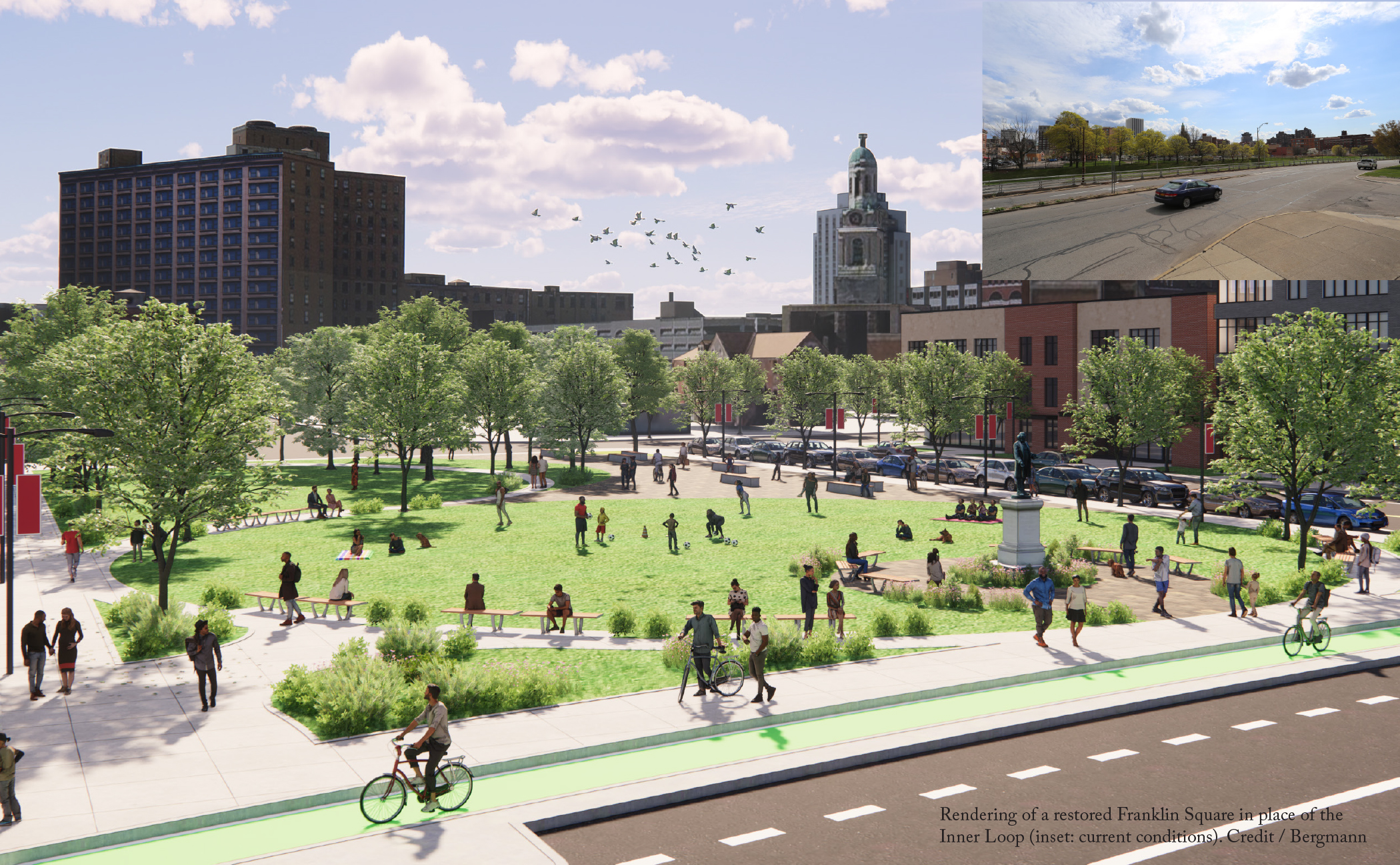History and Context
Rochester is looking to pick up where it left off. In 2017, the City completed its transformation of the eastern portion of the Inner Loop into an urban street, which has already paid significant dividends. Now, as the City considers what to do with the northern part of the Inner Loop, it has the opportunity to replicate this success and focus even more on creating outcomes that support a cohesive and inclusive community.
For decades, Rochester’s 2.68-mile Inner Loop acted as a moat between its central business district and adjacent residential neighborhoods. It presented a major barrier to both walking and biking to and from downtown and had become a liability as much of it fell into disrepair and the number of cars traveling on it continued to decline. The Inner Loop East Transformation Project was the City’s first step to address the issues the Inner Loop has caused. The removal of the Inner Loop’s eastern portion was low-hanging fruit, as only 10,500 cars a day drove that part of the highway.
The transformation of the Inner Loop East has served as a demonstration project for highway removal in other parts of the city. Since the project started in 2014, walking increased 50 percent and biking 60 percent in the area. The city was also able to reclaim 6.5 acres of land for development by filling in the highway. The current plan for this land is to develop 534 housing units, more than half subsidized or below market rate, and 152,000 square feet of new commercial space. Work is already underway and over the first two years the removal project, which cost only $22 million in public funds, generated $229 million in economic development.
Proposal
All this sets the stage for the Inner Loop North. Rochester is now exploring options for removal of this part of the highway, which runs from I-490 to the intersection of Union Street and Main Street. While the City has yet to commit to any specific design for the project, it has laid out a set of guiding principles: it should improve connectivity, increase multi-modal transportation options, create new green spaces, and foster opportunities for economic and community development in surrounding neighborhoods, home to a predominantly Black and brown population. With a focus on racial equity, the project aims to prevent displacement of existing residents and businesses. Preliminary concepts estimate around 15 acres of land could be reclaimed for development, along with several acres of green space.

A group of community members, Hinge Neighbors, is also working with residents on both sides of the Inner Loop to raise awareness about the impacts the project will have and communicate local needs and desires to the City and its consultants. To gather more information, they’ve launched a community survey, which has had some telling results. One of their significant findings is residents’ desire for housing that better fits neighborhood character and different living situations. Four story buildings, full of one- and two-bedroom apartments, don’t address the needs of all community members, even if they include affordable units. Residents would rather see a mix of housing types, including smaller homes that are often described as ‘missing middle’ housing. The City and its partners should take this into serious consideration as they think about creative options for affordability and avoiding displacement following removal.
Rochester’s success with the Inner Loop East garnered national attention. With the removal of the Inner Loop North, the city has the opportunity to once again be at the forefront of the Highways to Boulevards movement. It should lead the way by doing everything in its power to listen to residents and incorporate their ideas into the project’s final designs. At the same time, the City should also explore all the policy tools it can use to support residents and their visions. If Rochester follows through on these commitments, it will be a model for future highway removal projects prioritizing equity.


















